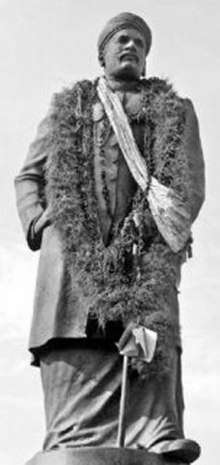Pulayar
The Pulayar (also Pulaya, Pulayas, Cherumar, Cheramar and Cheraman) is a caste[1] in Hinduism, forming one of the main social groups in modern-day Kerala and Karnataka as well as in historical Tamil Nadu or Tamilakam.
 | |
| Total population | |
|---|---|
| 1,041,540 (2001) | |
| Regions with significant populations | |
| Languages | |
| Malayalam | |
| Religion | |
| Hinduism, |
Traditions
Pulayars are noted for their music, craftsmanship, and for certain dances which include Kōlam-thullal, a mask dance which is part of their exorcism rituals, as well as the Mudi-āttam or hair-dance which has its origins in a fertility ritual.[2][3][4]
Demography
According to the 2011 Census, the Pulayan population in Kerala was 1,338,008. They were the largest Dalit group in the state.[5]
Notable people
- Ayyankali (1863 - 1941), social reformer
- K. P. Vallon (1894 - 1940), social reformer
- Pampady John Joseph (1887-1940), social reformer
References
- Moffatt, Michael (2015). An Untouchable Community in South India: Structure and Consensus. Princeton University Press. p. 42. ISBN 978-1-40087-036-3.
- "PRIMAL ELEMENTS:THE ORAL TRADITION".
-
"Early Evidence for Caste in South India, p. 467-492 in Dimensions of Social Life: Essays in honor of David G. Mandelbaum, Edited by Paul Hockings and Mouton de Gruyter, Berlin, New York, Amsterdam, 1987". Cite journal requires
|journal=(help) - http://www.soas.ac.uk/research/publications/journals/ijjs/file46109.pdf
- "Census of India Website : Office of the Registrar General & Census Commissioner, India". www.censusindia.gov.in. Retrieved 31 August 2019.
This article is issued from Wikipedia. The text is licensed under Creative Commons - Attribution - Sharealike. Additional terms may apply for the media files.